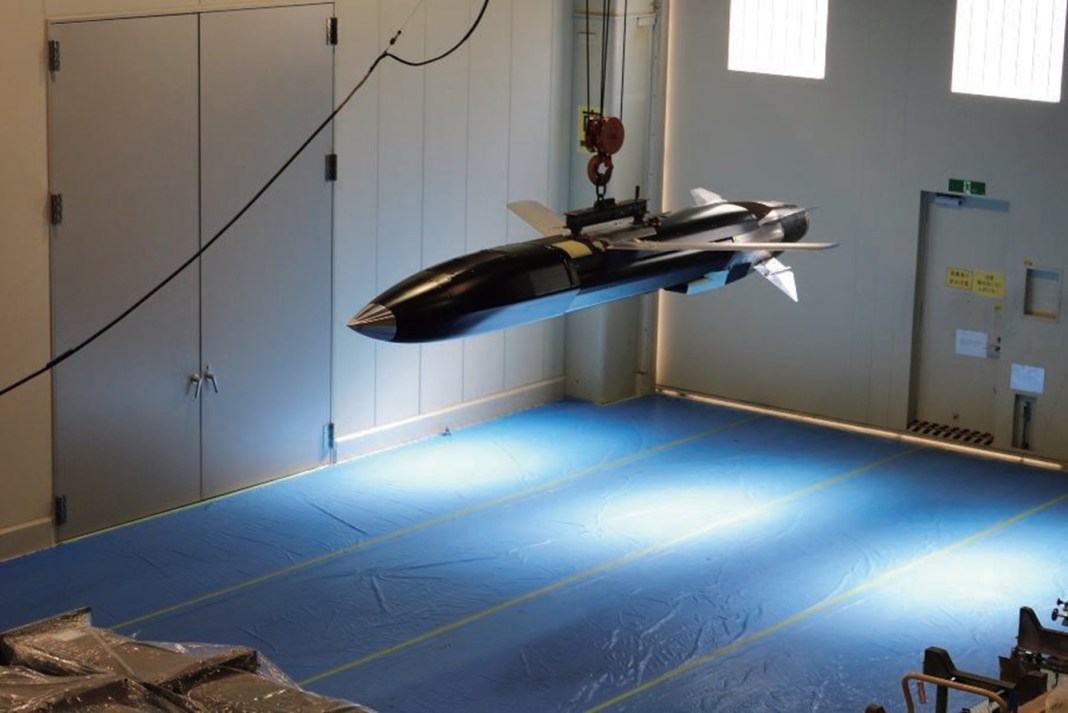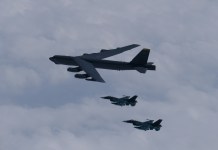In its recently published annual Defense White Paper, Japan released new images of the upgraded Type 12 surface-to-ship missile prototype being developed to strengthen the country’s defense and counter-strike capabilities.
The photo caption of the prototype missile reads: “The improved Type 12 surface-to-ship missile (prototype) has passed various ground tests.”
The image of the upgraded Type 12 SSM prototype offers a close-up view of the missile’s shape.
In what may be an interesting coincidence, some reports and military analysts observed that the improved missile prototype resembles the Franco-British Storm Shadow/SCALP EG, a long-range, low-observable cruise missile.
The Storm Shadow/SCALP-EG is notoriously known for its role in the Ukraine War. The Ukrainian Air Force has extensively used air-launched long-range cruise missiles to inflict damage on Russia, particularly in the Crimean Peninsula, where the Russian Black Sea Fleet is stationed.
Ukraine is currently attempting to seek approval from the UK and France to use the missile in strikes targeting Russian territory.

Japan’s upgraded Type 12 missile may bear a resemblance to the Storm Shadow, but they differ significantly in terms of design, deployment methods, and intended functions.
The primary difference between the two missiles is that the Storm Shadow is an air-launched missile, whereas the Japanese Type 12 is a surface-launched missile. Additionally, the Storm Shadow’s range is slightly over 500 kilometers, while the improved Type-12 has been envisioned as a long-range missile with a range of about 900-1,200 kilometers.
The latest version of Japan's Type 12 SSM looks like a Storm Shadow that's been designed by Anime artists.
I half expect it to transform into a Mecha or for laser turrets to emerge in flight. pic.twitter.com/ySZSEDi1Cy
— The Other Chris (@TotherChris) July 15, 2024
Experts say the images of the improved Type 12 missile are similar to those published in the 2022 Defense White Paper but feature certain advancements. The general design and location of the air inlet on the missile’s underbelly are largely the same.
However, according to some reports based on a close analysis of the weapon, the improved prototype has more noticeable rearward-angled primary wings and distinct X-shaped tail fins, which may increase stability and aerodynamic performance.

The radar cross-section area has been reduced to make the improved Type 12 missile stealthier than its previous variant.
The images of Japan’s new and improved Type 12 missile were unveiled in its Defense White Paper published on July 12, which stated emphatically that global security challenges were particularly apparent in the Indo-Pacific region and were anticipated to grow. The paper did not name a potential aggressor in the region, but experts surmised that it was likely referring to China, which has promised to use force to reunite Taiwan if necessary and has claimed Japan’s Senkaku Islands.
The paper stressed that the country’s stand-off capabilities need to be bolstered to counter threats from invading vessels and landing forces, particularly in the island regions.
The paper said, “We are fundamentally strengthening our standoff defense capabilities against invading vessels and landing forces, including in the island regions, by deploying the enhanced Type 12 Surface-to-Ship Missile (ground-launched version) and acquiring U.S.-made Tomahawk missiles, one year ahead of schedule, starting in fiscal year 2025.”
The improved Type-12, with a range longer than the previous variant, is expected to play a crucial role in thwarting any attack from potential adversaries in the region.
What Do We Know About The New Type 12?
In April 2023, the Japanese MoD awarded contracts to Mitsubishi Heavy Industries to develop and mass-produce enhanced versions of Mitsubishi’s Type 12 missiles for surface, sea, and air launches. The deployment was scheduled for FY 2026, but in December 2023, the MoD announced that it had been accelerated to FY 2025.
Japan intends to enhance its counter-strike missile capabilities by deploying Type 12 early as part of its National Defense Strategy (NDS) to face growing military threats from North Korea, China, and Russia.
With an improved design, a longer missile length, an in-flight target update capability via an up-to-date command (UTDC) link, and greater engine endurance to support extended operations, the enhanced Type 12 SSM has a range between 900 and 1200 kilometers. This is a significant increase compared to the original Type 12 missile’s 200-kilometer (just over 124-mile) range.

Additionally, the “Type 12 SSM (Upgraded)” will use UDTC, which enables the missile to more precisely attack moving targets by using satellite connections to gather information about the target while in flight.
In 2020, the Japanese MoD expanded the Type 12 SSM’s capability to safely target enemy naval vessels beyond the enemy’s anti-aircraft missile range. This decision was primarily made in light of China’s military build-up and maritime expansion. Stand-off missiles allow a military to attack sites such as enemy missile bases outside the enemy’s range.
In addition to the traditional ground-launched version, the upgraded Type 12 will also be developed for ship- and aircraft-launched platforms.
The new missile is intended to provide Japan with a strong defense posture against possible threats by enabling Japan to engage enemy targets beyond the reach of opposing anti-aircraft systems. The Defense Ministry’s decision to advance the deployment emphasizes how crucial this missile system is strategically to preserving regional security.
- Contact the author at sakshi.tiwari9555 (at) gmail.com
- Follow EurAsian Times on Google News




